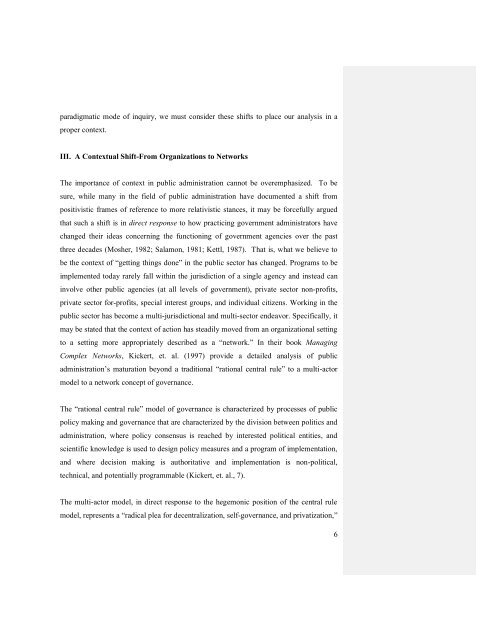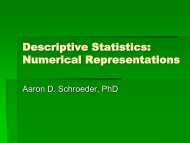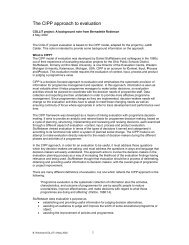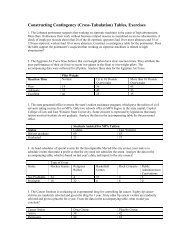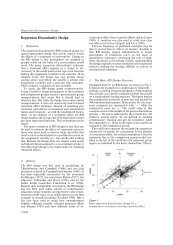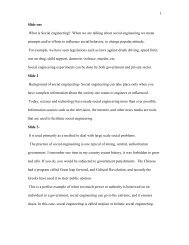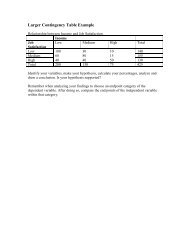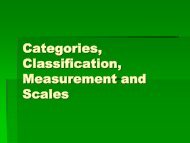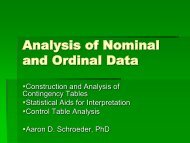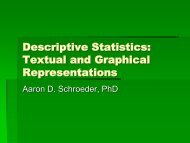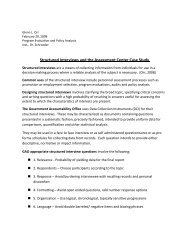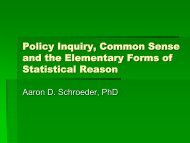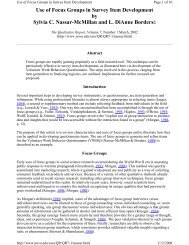The Problem
The Problem
The Problem
You also want an ePaper? Increase the reach of your titles
YUMPU automatically turns print PDFs into web optimized ePapers that Google loves.
paradigmatic mode of inquiry, we must consider these shifts to place our analysis in a<br />
proper context.<br />
III. A Contextual Shift-From Organizations to Networks<br />
<strong>The</strong> importance of context in public administration cannot be overemphasized. To be<br />
sure, while many in the field of public administration have documented a shift from<br />
positivistic frames of reference to more relativistic stances, it may be forcefully argued<br />
that such a shift is in direct response to how practicing government administrators have<br />
changed their ideas concerning the functioning of government agencies over the past<br />
three decades (Mosher, 1982; Salamon, 1981; Kettl, 1987). That is, what we believe to<br />
be the context of “getting things done” in the public sector has changed. Programs to be<br />
implemented today rarely fall within the jurisdiction of a single agency and instead can<br />
involve other public agencies (at all levels of government), private sector non-profits,<br />
private sector for-profits, special interest groups, and individual citizens. Working in the<br />
public sector has become a multi-jurisdictional and multi-sector endeavor. Specifically, it<br />
may be stated that the context of action has steadily moved from an organizational setting<br />
to a setting more appropriately described as a “network.” In their book Managing<br />
Complex Networks, Kickert, et. al. (1997) provide a detailed analysis of public<br />
administration’s maturation beyond a traditional “rational central rule” to a multi-actor<br />
model to a network concept of governance.<br />
<strong>The</strong> “rational central rule” model of governance is characterized by processes of public<br />
policy making and governance that are characterized by the division between politics and<br />
administration, where policy consensus is reached by interested political entities, and<br />
scientific knowledge is used to design policy measures and a program of implementation,<br />
and where decision making is authoritative and implementation is non-political,<br />
technical, and potentially programmable (Kickert, et. al., 7).<br />
<strong>The</strong> multi-actor model, in direct response to the hegemonic position of the central rule<br />
model, represents a “radical plea for decentralization, self-governance, and privatization,”<br />
6


